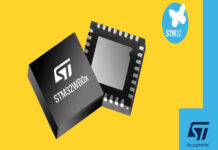Consumer demand, COVID-19, and powerful wireless tech are shifting wearables from fitness trackers to sophisticated devices capable of providing wide-ranging medical insight
For many of the billion or so of us who own a wearable, the appeal of our device is in its versatility. It acts as our all-in-one personal assistant, trainer, life coach and motivational speaker, checking our messages, urging us to exercise, and patting us on the back when we achieve our goals. Now, as wearables become increasingly sophisticated, they are adding further job titles to their already impressive list: doctor, paramedic, and emergency first responder.
Just ask Connecticut resident Patricia Lauder. On retirement, Lauder decided it was time to get into shape, so she bought herself a smart wearable and began to exercise. Soon after she started to feel unwell, experiencing shortness of breath and fatigue, symptoms she initially brushed off until her device reported that her normal resting heart rate of 70 bpm was now 140 bpm. She called 911 and was immediately rushed to hospital where they found she had two large blood clots in her lungs. The clots were removed the next day and Lauder’s health returned to normal.
Lauder’s wearable didn’t save her life—that was down to the physicians at the University of Connecticut Health’s cardiology center—but it did provide the early warning system necessary to allow the experts to do their job. Such stories are becoming commonplace as wearables evolve from basic activity trackers to devices capable of monitoring for medical emergencies, as well as offering physiological insights that can help prevent and manage disease.
This transition has been driven by three key factors; consumer demand, COVID-19, and of course, the increasing sophistication of the technology itself. According to research from analyst GWI, while consumers still consider fitness tracking the leading reason for owning a wearable, nearly half of all owners now expect their wearable to also monitor their health. One in five of us also value its ability to help doctors manage our health.
The COVID-19 wearable boom
The pandemic has also driven a shift in wearable tech. In March 2020, the U.S. Food and Drug Administration (FDA), a body responsible for ensuring the safety and efficacy of medical devices, issued a new policy allowing manufacturers of FDA-cleared non-invasive, vital sign-measuring devices to expand their use so healthcare providers could use them to monitor patients remotely. This included wearables that measure body temperature, respiratory rate, heart rate and blood pressure.
This saw the rapid development and deployment of numerous IoT-based ‘ehealth’ wearables. These devices provided a means to alert authorities about the likelihood of COVID-19 infection without requiring individuals to present in person for diagnosis by already stretched medical facilities. The wearables could also generate rich data sets that enable medical professionals to offer personalized health decisions, make earlier diagnoses, and ensure prescription adherence for a whole raft of other health care purposes.
The medical profession is broadly in favor of the potential of wearables to support their work. After all, the devices can provide a far more objective, less fragmented clinical record than a patient’s own unreliable recollections or disjointed medical history, in theory enabling better diagnoses and on-going treatment. The question though is who will sift through and analyze the massive amount of data such devices collect for doctors to make clinical sense of it? The average GP consultation is around six minutes, which doesn’t leave a lot of time for data analytics.
The power of ML
The answer lies in the ability of the wearable technology to do the heavy computational work on behalf of the medical profession. Today’s wireless SoCs and SiPs that power advanced wearables are well equipped to support the machine learning (ML) algorithms needed to wade through huge volumes of data and rapidly establish anomalies that could indicate underlying health issues. In so doing, the chips have the potential to allow wearable developers to explore ways to selectively provide doctors with only the information they need to make rapid, accurate clinical decisions, and ignore extraneous ‘noise’.
For example, Nordic Semiconductor’s partnership with Edge Impulse, a specialist in TinyML (a scaled-down form of ML suitable for IoT edge devices), allows developers to benefit from easy-to-use ML features as standard on Nordic’s nRF52 and nRF53 Series multiprotocol SoCs, as well as its cellular IoT-based nRF9160 SiP for medical and other applications where relaying data directly to the Cloud via the cell network offers obvious advantages.
Embedding ML and big data capabilities on these tiny wireless chips will enable wearable devices to move beyond basic wellness or step-counting applications towards multifunction medical solutions. They could also provide healthcare providers with informed yet selected diagnosis, treatment, tracking and disease prevention data. There is also a growing body of research that has shown that when AI makes better decisions than humans—by solving problems differently to us, recreating human trial and error, and then checking our work over and over again—it will also make our own decision-making better by exposing us to different ways of processing and understanding data. Such research offers intriguing possibilities for the AI- and ML-powered wearables of the future by allowing them to not only support medical professionals, but also improve them and their decision-making.















